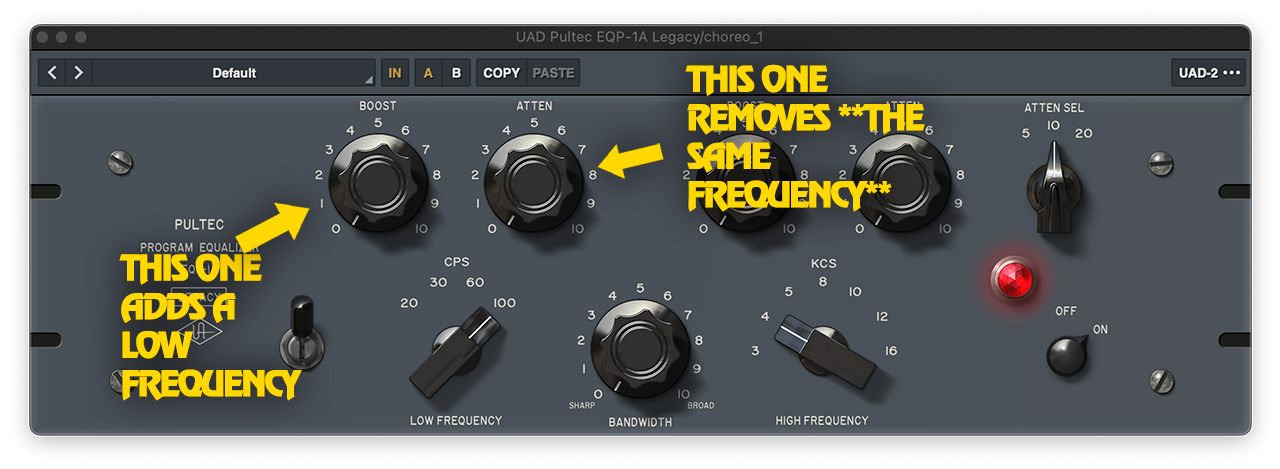Notes from Wednesday Morning

Wow this Wednesday has rolled around quickly. I had no plan for The K.N.R.U. this week, and although there's no real need for these dispatches to be weekly, it's been useful on my end of things to build it up as a habit, and as a way to generally keep track of time as it hurtles by.
This morning I am working on something where I need to listen to a lot of material with fresh ears, and I have found that sometimes (only sometimes) a good way to hear music fresh is to be semi-occupied doing something else. This doesn't work for me if I'm trying to mix or hit some particular quality of sound design, but if I am more concerned with the structure/arrangement of a song, or how a collection of songs broadly sit together, the Polinski Half-Listening™ method can come in useful.
So this week's post is me semi-distracting myself writing here while Half-Listening™. And maybe I'll send it at the end, or just delete. I don't know yet, but I guess you do.
DIALECTICAL EQUALISATION
If you're not a musician - equalisation is when you add or remove frequencies to a piece of audio. This can be as broad as the kinds of bass and treble boosts you might see on a stereo or phone, to very precise parametric eqs that can target tiny slivers of frequency.
Normally, if you're using an equaliser, what you are presented with for any given frequency is either a dial or a slider with a midpoint of zero decibels, and you can either add or reduce gain to that particular frequency by turning it. For example:

However. The Pultec EQP-1A equaliser is rare (or unique?) in its approach. Because for a given frequency range, instead of having a dial or slider that adds or removes gain at that frequency, IT HAS TWO DIALS. One dial boosts the frequency, one dial attenuates the same frequency. This means that you can add and remove a specific frequency at the same time! (!!!)

Outstanding. This can only be described as dialectial equalisation, and as such is a perfect metaphor for the human condition in which being happy and being sad are not two points on the same spectrum, but are, in fact, two in(ter)dependent states and therefore it is possible to be full (or empty) of both at the same time, and the secret of how one dial affects the other is hidden within impossibly complicated circuitry, inside a black box you cannot access.
Thank you, Pultec EQP-1A. I'll be entering into no further discourse regards the accuracy of this metaphor.
THIS WEEK
It isn't clear to me if I'm allowed to talk about the thing I am working on at the moment even in vague terms, so I'd best not. But it makes having anything else to write about here a bit tricky. It's a pity because the last couple of months have really given me a lot to think about in terms of music-making, which really is the only thing I have any authority to write about.
Once all that is clearer though, I hope to be able to find a way to talk about some of the ideas and approaches I've been taking recently, even if the specific subject matter is kept out of it.
Outside of that project, any 65LABS work tends to happen in the latter part of the week and so by the time Wednesdays come back around that is usually naught but a distant memory. Plus, whatever I can remember I need to keep for the 65LABS monthly updates. (Which, if you're a patron, is due in a couple of days.)
PATTERN CLUB LIVE SHOW
The struggle to know how to approach my Pattern Club live show next month is over. I realised that the answer was staring me in the face the whole time: The Sonorous Below.
Deep under MIDI City, a vast underground ocean exists. It is known to the people who live above it as The Sonorous Below. This vast body of water holds a tumultuous energy. Some kind of primal, primordial force. A liquid architecture of resonance, bristling — rippling — with latent noise.
You hear it said that The Sonorous Below breathes. Others say it slowly ruptures, using tremors as its brush, its lethargic strokes sculpting deep tracts of sonic kinesis into the earth.
These messages hold no terror. The people of MIDI City live in harmony with The Sonorous. Their night clubs rumble to Sonorous rhythms. Their streets hum to the melodies of movement surging upwards from the depths below.
Anyway, for my show, I figured that I can build a piece of guerilla software and use it to hack into the endless broadcasts that ripple out of The Sonorous Below. I'll just tune into whatever noise it is manifesting in the moment and pipe it out into the club. I'll be less a performer, more a kind of frequency wrangler.
This feels like a neat, unambitious plan that I am sure will be simple to pull off in the time I have without driving myself to despair. So expect relaxed, care-free updates on this as I leisurely pull it together over the next few weeks.

Member discussion